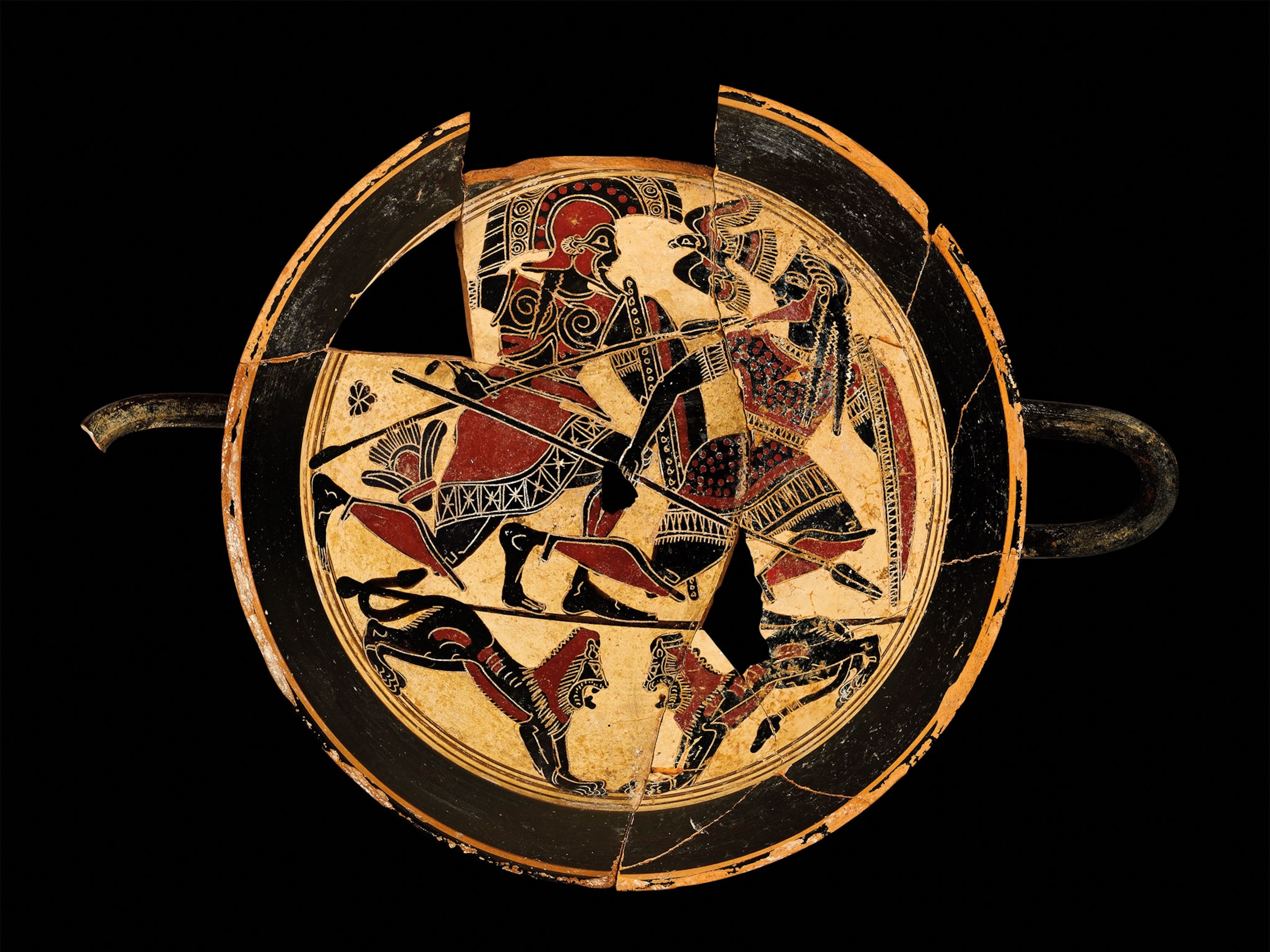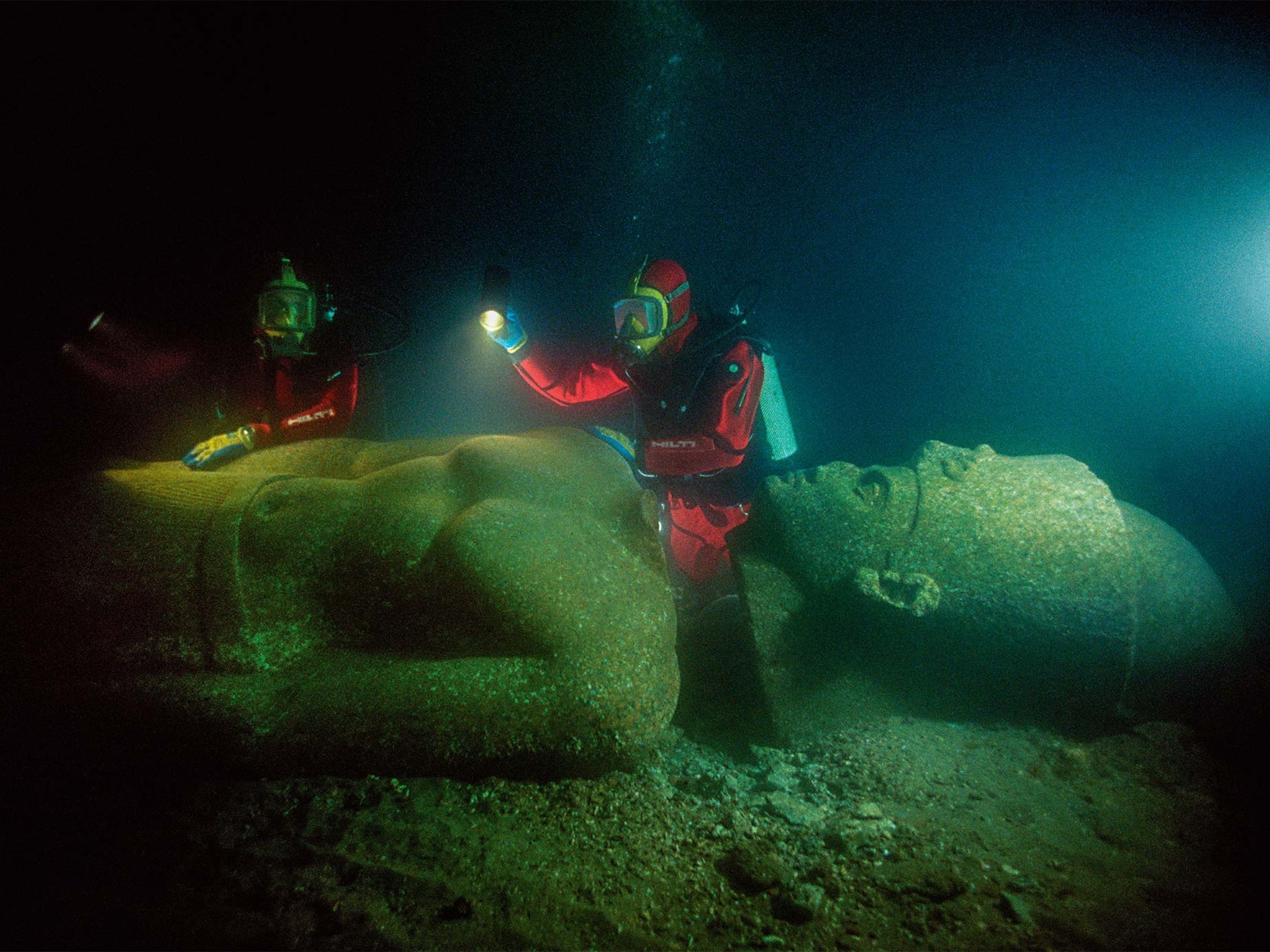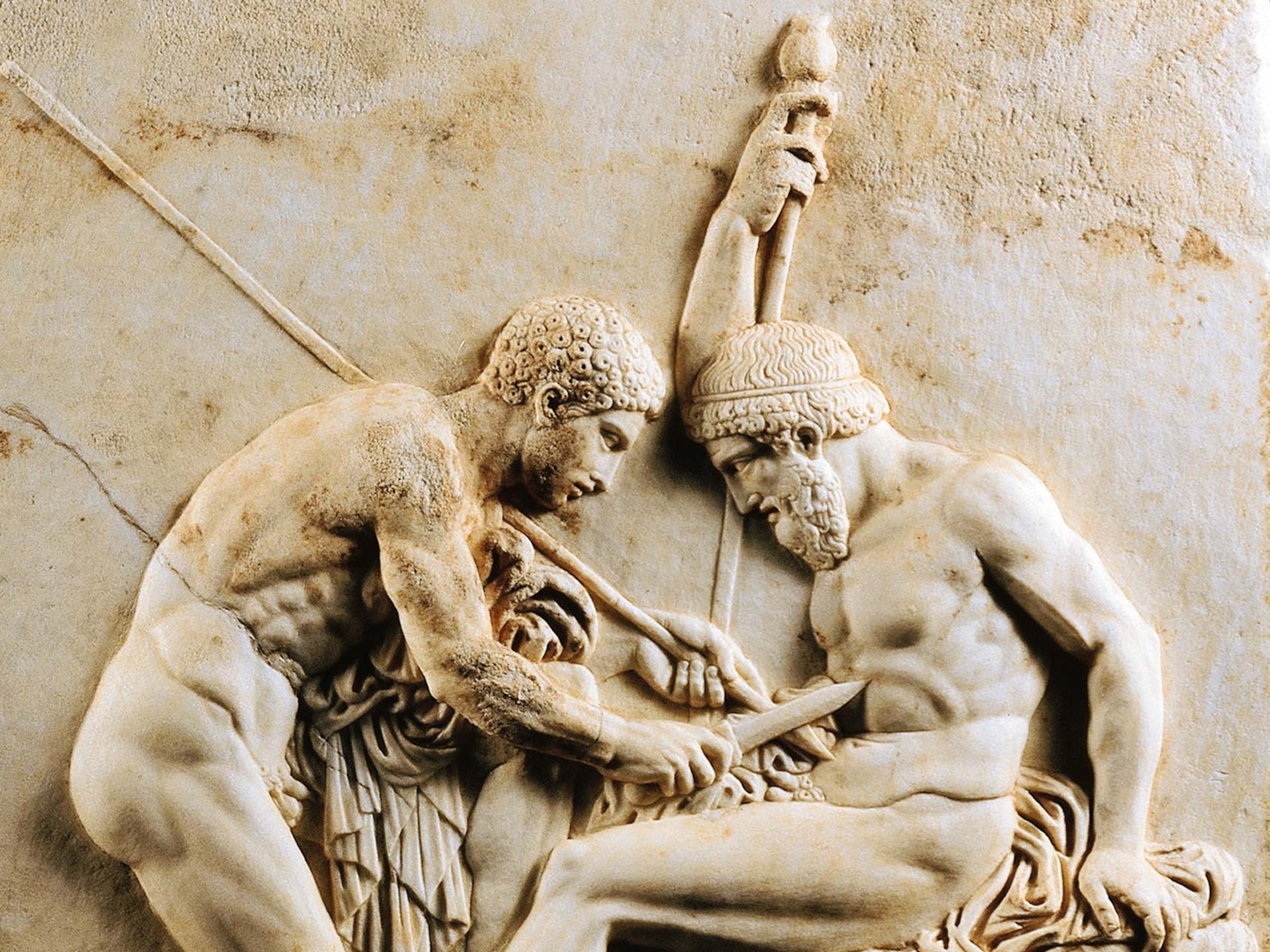Were Alexander the Great and Hephaestion more than friends?
The Netflix series “Alexander: The Making of a God” examines the relationship between the Macedonian leader and his longtime companion. Here’s what historians do and don’t know.

Alexander the Great remains one of history’s most prolific empire-builders. Yet he didn’t build his empire alone. An army of generals, friends, and allies were at his side.
The new Netflix docudrama Alexander: The Making of a God examines one of Alexander’s most significant—and controversial—relationships: the one he shared with Hephaestion, his closest companion.
What was the relationship between Alexander and Hephaestion?
The man who would become Alexander the Great was born in July 356 B.C. and inherited the Macedonian throne two decades later. Over 13 years, he forged an empire that stretched from the Mediterranean to India.
And through it all, his right-hand man was Hephaestion.
Hephaestion was roughly Alexander’s age, according to Roman historian Quintus Curtius Rufus. No one knows for sure exactly how or when they first met, but Alexander and Hephaestion seem to have studied together under the Greek philosopher Aristotle beginning when they were around 13.
Arrian’s account was written sometime in the second century, about 450 years after Alexander’s death.
Alas, none of the surviving ancient Greek texts we have aboutAlexander were eyewitness accounts, though they were based on earlier records that have since been lost. The earliest surviving text is believed to be from historian Diodorus Siculus, probably written around the 30s B.C., a few centuries after Alexander’s death.
Was it more than friendship?
Sexual relationships between men were common among elites in ancient Macedonia. Alexander likely “participated in the martially-driven bisexual culture of the Macedonian court,” according to historian Daniel Ogden.
At the same time, ancient writers didn’t conclusively identify Alexander and Hephaestion as lovers. One hint came from Claudius Aelianus, a third-century Roman writer, who claimed Hephaestion “was the object of Alexander’s love,” though he was writing approximately 550 years after Alexander’s death.
Due to this lack of certainty, modern scholars hesitate to precisely define Alexander and Hephaestion’s relationship. Nonetheless, many conclude they may have been lovers.
How did Alexander honor Hephaestion?
We know that Alexander elevated Hephaestion to “chiliarch,” a position second only to Alexander himself, around 330 B.C.
He also reportedly hoped to formalize his relationship to Hephaestion through kinship ties. According to Arrian, Alexander married Hephaestion to his wife’s sister Drypetis so “that Hephaestion’s children should be joined in affinity with his own.”
Fate snuffed out Alexander’s plans when Hephaestion fell ill and unexpectedly died in October 324 B.C.
Hephaestion’s death plunged Alexander into grief. He reportedly draped himself over Hephaestion’s corpse, refused food, cut his hair, and organized an extravagant funeral.
Less than a year later, Alexander would be reunited with his companion in death.





